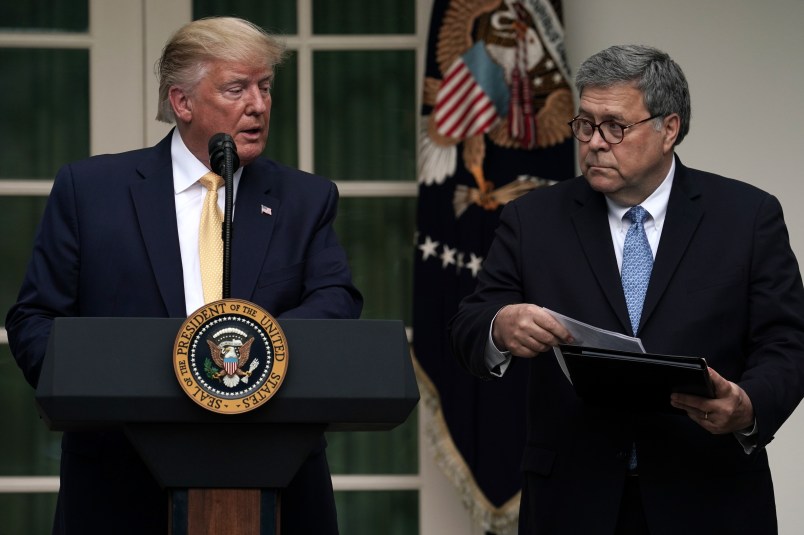A lawyer for the Trump administration provoked palpable frustration Thursday from at least one of the three judges in New York who are considering a challenge to President Trump’s new anti-immigrant census policy.
“I wonder why we have to wait,” the judge, U.S. Circuit Judge Richard Wesley, said at the hearing, clearly skeptical of Justice Department arguments that the case wasn’t ripe for resolution now.
The policy, unveiled by Trump in July while the decennial survey was well under way, seeks to exclude undocumented immigrants from the count that is used to decide how many House seats each state gets, in the process known as congressional apportionment. It has major consequences for how political power is doled out in the country, and would shift representation away from diverse, immigrant-rich parts of the country, in favor of whiter, more Republican-leaning regions.
A key question before the judges on Thursday is whether they should now decide whether the policy — which, in this case, is being challenged by a coalition of states and by immigrant rights groups — is legal, or whether they should wait until January, after the apportionment numbers are produced.
Justice Department attorney Sopan Joshi leaned into the idea that it’s still unclear whether the Commerce Department, which oversees the census, would definitely implement the policy, since the President’s July order instructed the Department to exclude those immigrants to the extent that it is “feasible.”
“It sounds definite to me,” Wesley said, clearly not buying that argument.
Wesley suggested that the administration was depending on an argument that made it “easy to hide the ball,” as Joshi couldn’t tell him when the Commerce Department would provide more information on whether the policy would be feasible.
“The uncertainty can’t be self-induced,” the judge said.
The new policy is widely believed to be a violation of the Constitution — which demands an “actual enumeration” of “whole number of persons” for congressional apportionment — as well as of certain statutes Congress has passed backing a total population approach to apportionment
The New York case challenges the policy on both grounds, while also arguing that the administration is running afoul of administrative law in how the policy is being implemented.
While some of the arguments Thursday dealt with these merits questions, the bulk of hearing was focused on so-called threshold issues: i.e., whether the challengers are suffering the kinds of harm from the policy that make it appropriate for the court to address it, and whether now is the appropriate time for the court to do so.
In addition to the tough questions the Justice Department faced about the case supposedly not being ripe, the administration also ran into serious headwinds for its claims about the challengers lacking standing.
The immigrant rights groups say that the policy is forcing them to divert resources towards getting census participation out of immigrants who are now reluctant to fill out the survey, due to the message, via the the policy, that such participation is futile.
U.S. District Judge Jesse Furman — the only Democratic appointee on Thursday’s panel, and the judge who also presided over the lawsuit challenging Trump’s addition of a citizenship question to the census — suggested that both he and the Supreme Court had already rejected the arguments the administration is making now for why that theory of harm shouldn’t count.
U.S. Circuit Judge Peter Hall, the panel’s third judge, asked fewer questions than the other two. But he cornered the Justice Department with a question about whether challengers would have standing if they showed that there was at least one immigrant who had decided not to participate in the census based on the policy and who would participate after all, if the policy was blocked by the court.
“It would have to be non-speculative,” Joshi said, unwilling to answer the question directly.
Turning to the merits, Furman asked Joshi to identify any previous examples of when either the executive branch, legislative branch or judicial branch had taken the position that the new policy is lawful. Furman then rattled off several instances when the Justice Department, in both court cases and in legal guidance it issued, had argued that it wasn’t.
The judges had tough questions for the challengers’ lawyers as well, as they appeared to grapple with the Trump argument that it was too soon to resolve the case.
“What keeps us from waiting, from a prudential standpoint, waiting until the Secretary of Commerce comes up [with the number of undocumented immigrants]?” Wesley asked Judith Vale, an attorney in the New York Attorney General’s office, which is leading the state-based coalition challenging the policy.
But many of these questions seemed aimed at figuring out exactly how the court should rule, if it was going to rule in the challengers’ favor. For instance, Furman asked ACLU attorney Dale Ho, who’s representing the immigrant rights groups, whether the court needed to resolve both the constitutional and statutory claims, or could it just block the policy based on the census law, in keeping with a principle known as “constitutional avoidance.”
Noting the likelihood of an appeal and the urgency for a final resolution, Ho said the “better course” would be for the court to resolve both claims now.
Because the case deals with apportionment, it was taken up immediately by a three judge panel, rather than heard first by a single trial judge. The panel’s decision, if appealed, would then go directly to the Supreme Court.
Furman ended the hour and a half long hearing with a promise that the panel would issue a decision “as soon as we can.”



